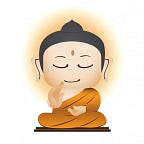Sair-e-Lal Quila (Part II)
Well in the last post I forgot to share my own personal experience of being at a ‘magnus opus’ of Mughal architecture and also wanted to share some history of this impenetrable fortress, but for the history part I think Wikipedia can do the needfull.
And, as mentioned in my last post, it was pretty hard to break through our grueling schedule, but we finally did it in the second week of November. The plan was that we would all gather at a common point from there we would go to Red fort, but it was to be done under a strict time period of 2 hours and in no way we could even think of encroaching this dead line by more than 30 minutes. For the visit I woke pretty early, packed my books in my satchel and then had an Uber to the nearest metro station. In the mean time my friend Venky called me and asked me about my whereabouts and after finding out that I was already on my way to the rendezvous point, he too skirted through his morning routine and asked me to call him when I reach the junction. In few minutes more than forty, I was finally intercepted by Venky who joined me exactly according to our plan. But our third friend(Mr. S) was still far enough to give I and Venky all the reasons to continue with the plan but without our friend ‘S’. We assured ‘S’ that we would meet him at the Red fort, which he drably accepted.
At the ticket counter Venky quickly bought three tickets and Mr.’S’ was still scuttling from one metro to another. While we were walking towards the main entrance of the red fort, I kept my gaze at the prodigious contours of the fort. It was literally very hard for me to digest that these building were built in pre-industrial times, an era where manual work was the hobson’s choice. The sheer size of the rock slabs of red sand-stone that were used to fortify the fort kept baffling me. There was also an extra layer of security around the fort, which was apparently a large circular ditch around the fortification and was filled with water during medieval times. Though presently it’s filled with anything but water, but during medieval time it must have provided an extra layer of security from incoming armada of the opponent’s army, particularly from a full blown cavalry charge.
After walking for few minutes we reached the front area of the ramparts from where the Prime Minister addresses the country on the eve of Independence day. It was humongous and at the very first sight the idea of a whole unit of the royal guard standing there, with sky high flagpoles with waving flags in their hands enunciating the might of Mughal empire, struck my mind. We scuttled towards the entry gate and deposited our bags in the cloak room and started towards the mighty Lahori gate, after few photographs we then traversed through chaotic ‘Meena baazar’. The market was way heavier than what our pockets could carry, a simple wooden burst of Buddha was worth in thousands, hence we preferred window shopping and then scampered towards the interiors of the fort.
We went in a very sequential manner, first he Naubat Khana followed by some kind of guest house then a building with underground floor which was described my friend as some kind of prison then Diwan-i-Khas and many other magnificent pieces of architecture. With the architectural magnificence, the enigmatic history attached to these monuments was something that kept me in loops during our visit. Every slab of red sandstone was elucidating its own genesis which now is an irreplaceable part of our country’s history. While looking at Diwan-i-Khas I was trying to juxtapose it with what I had read in my history books about the politics of Mughal royalty. I was imaging how Shah Jahan would have sat in Diwan-i-Khas enjoying the decor and discussing politics with his admirers and ministers. Near to Diwan-i-Khas was Moti Masjid which was built by notorious Aurangzeb, the last powerful emperor of his dynasty. I remember I had an incessant smile on my face while I was circum-ambulating the Moti Masjid. I was constantly thinking when and how Aurangzeb, who is known for his extreme views and brutality, would have offered his prayers here. The men and women of my history books once laughed, ate and relaxed here. And I think this is what makes history a very fascinating subject, it acts as a mirror for us, reflecting back our goodness and malices. After spending few minutes less than two hours we started back towards our institute, taking with us fabulous memories and pride.
